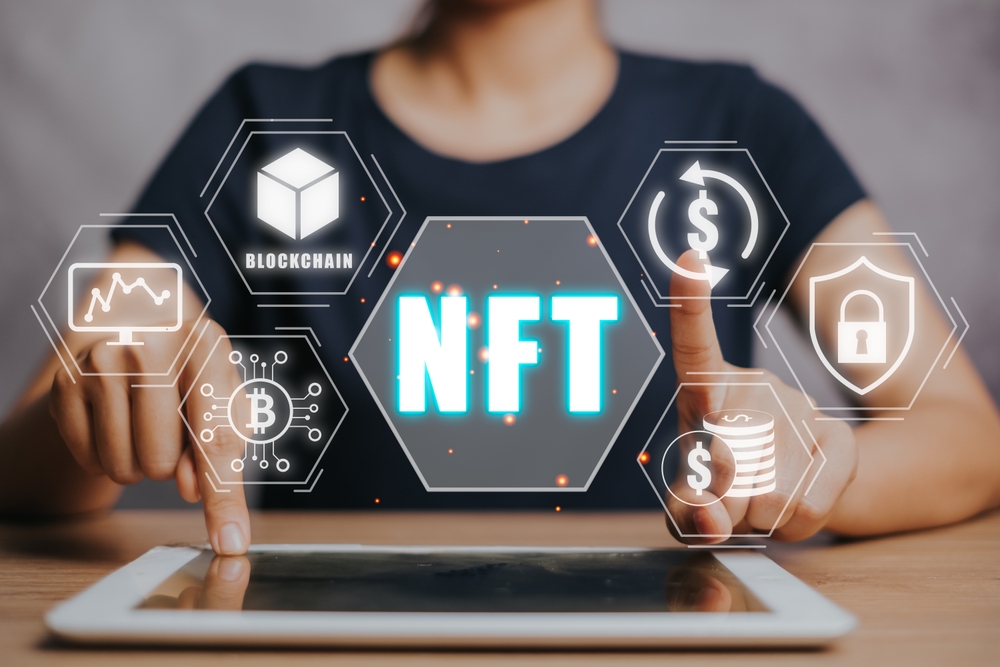As blockchain technology continues to advance, its potential applications are expanding across various sectors. While its transformative impact is evident, several opportunities and challenges will shape the future of blockchain. This section delves deeper into these aspects, offering a forward-looking perspective on the technology’s evolution and its implications for different industries.

Opportunities in Blockchain Technology
Enhancing Data Integrity and Security
One of the most significant opportunities offered by blockchain is its ability to enhance data integrity and security. The decentralized and immutable nature of blockchain ensures that once data is recorded, it cannot be altered or deleted without consensus from the network. This feature is particularly valuable in industries where data integrity is crucial, such as finance, healthcare, and government.
In the finance sector, blockchain’s security features can prevent fraud, reduce cyber-attacks, and ensure the accuracy of financial records. In healthcare, blockchain can secure patient records, protect sensitive information from unauthorized access, and facilitate secure sharing of health data among providers. In government, blockchain can enhance transparency and prevent corruption by providing a verifiable record of transactions and expenditures.
Streamlining Operations and Reducing Costs
Blockchain technology has the potential to streamline operations and reduce costs across various industries. By automating processes and eliminating intermediaries, blockchain can enhance efficiency and reduce administrative overhead.
In supply chain management, blockchain can automate and digitize documentation, reducing the need for manual paperwork and intermediaries. This can lower costs, accelerate processes, and improve accuracy. In real estate, blockchain can simplify property transactions and title management, reducing the need for brokers and escrow agents and minimizing transaction fees.
Additionally, blockchain’s ability to facilitate peer-to-peer transactions can reduce costs for consumers and businesses alike. For example, decentralized energy trading platforms can enable individuals and businesses to trade energy directly, reducing reliance on centralized utilities and lowering energy costs.
Driving Innovation and New Business Models
Blockchain technology is driving innovation by enabling new business models and creating opportunities for growth. Decentralized finance (DeFi) platforms, for instance, are disrupting traditional financial systems by offering new financial products and services without intermediaries. Similarly, blockchain-based supply chain solutions are fostering innovation in traceability and transparency.
Blockchain also supports the creation of new digital assets, such as non-fungible tokens (NFTs), which represent ownership of unique digital items. NFTs are revolutionizing the art, entertainment, and gaming industries by providing a way to create, buy, and sell digital assets with verifiable ownership.
Furthermore, blockchain’s potential for interoperability and integration with other technologies, such as artificial intelligence (AI) and the Internet of Things (IoT), opens up new possibilities for innovation. For example, blockchain can enhance AI algorithms by providing secure and transparent data for training and analysis. Similarly, blockchain can support IoT applications by providing a secure and decentralized framework for managing connected devices.

Challenges and Considerations
Scalability and Performance
One of the primary challenges facing blockchain technology is scalability. As the number of transactions and participants on a blockchain network increases, the system can become slower and more expensive to operate. This is particularly true for public blockchains, which require consensus from a large number of nodes to validate transactions.
Scalability solutions, such as layer-2 protocols and sharding, are being developed to address these challenges. Layer-2 solutions, like the Lightning Network for Bitcoin, enable off-chain transactions that are later settled on the main blockchain, reducing congestion and increasing transaction speed. Sharding involves dividing the blockchain network into smaller segments, or shards, that can process transactions in parallel, improving scalability.
Despite these advancements, scalability remains a significant challenge, and achieving a balance between decentralization, security, and performance will be crucial for the widespread adoption of blockchain technology.
Regulatory and Compliance Issues
Blockchain technology operates in a decentralized and borderless environment, which can create challenges for regulatory and compliance efforts. Different countries have varying regulations and legal frameworks regarding blockchain and cryptocurrencies, leading to a complex and often fragmented regulatory landscape.
Businesses and organizations must navigate these regulatory challenges to ensure compliance with local laws and regulations. This may involve working with regulators, implementing robust compliance measures, and staying informed about changes in the regulatory environment. Additionally, privacy concerns related to blockchain data and the implementation of data protection regulations, such as the General Data Protection Regulation (GDPR) in Europe, must be addressed.
Adoption and Integration
While blockchain technology offers numerous benefits, widespread adoption and integration into existing systems and processes can be challenging. Many industries still rely on traditional systems and practices, and transitioning to blockchain-based solutions may require significant investment and change management.
Businesses must consider factors such as interoperability with existing systems, the cost of implementation, and the need for specialized skills and knowledge. Collaborating with blockchain experts and technology providers can help address these challenges and facilitate a smoother transition to blockchain-based solutions.
Energy Consumption and Environmental Impact
Blockchain networks, particularly those using proof-of-work (PoW) consensus mechanisms, can consume significant amounts of energy. The environmental impact of blockchain technology, particularly in terms of carbon emissions, has been a topic of concern.
Efforts are underway to address these concerns by developing more energy-efficient consensus mechanisms, such as proof-of-stake (PoS), which require less computational power. Additionally, blockchain projects are exploring ways to offset their carbon footprint and support sustainability initiatives.

The Road Ahead: Future Trends and Predictions
As blockchain technology continues to evolve, several trends and predictions are likely to shape its future. Understanding these trends can help businesses and organizations prepare for the opportunities and challenges that lie ahead.
Increased Focus on Privacy and Security
Privacy and security will remain top priorities for blockchain technology. As data breaches and cyber threats continue to rise, blockchain’s ability to provide secure and transparent data management will be increasingly valuable. Innovations in privacy-enhancing technologies, such as zero-knowledge proofs and confidential transactions, will play a key role in addressing privacy concerns and ensuring data protection.
Integration with Emerging Technologies
The integration of blockchain with emerging technologies, such as AI, IoT, and 5G, will drive innovation and create new opportunities. Blockchain can enhance AI by providing secure and transparent data for training and analysis. IoT applications can benefit from blockchain’s decentralized framework for managing connected devices and ensuring data integrity. The combination of blockchain and 5G can enable faster and more secure transactions in various applications, from smart cities to autonomous vehicles.
Expansion of Decentralized Applications (dApps)
Decentralized applications (dApps) are expected to grow in popularity as blockchain technology matures. dApps leverage blockchain’s decentralized and transparent nature to provide innovative solutions in areas such as finance, gaming, and social networking. The development of user-friendly dApps and platforms will drive adoption and expand the use cases for blockchain technology.
Adoption of Central Bank Digital Currencies (CBDCs)
Central bank digital currencies (CBDCs) are digital currencies issued and regulated by central banks. Many countries are exploring the development and implementation of CBDCs to modernize their financial systems and improve monetary policy. CBDCs could leverage blockchain technology to enhance security, efficiency, and financial inclusion. The adoption of CBDCs will have a significant impact on the global financial landscape and may reshape the way we interact with digital currencies.
Conclusion
Blockchain technology is transforming various industries by providing solutions to longstanding challenges and driving innovation. From finance and supply chain management to healthcare, real estate, government services, and energy, blockchain’s impact is profound and far-reaching.
As we look towards the future, blockchain technology will continue to evolve, offering new opportunities and facing new challenges. Businesses and organizations must stay informed about these developments and strategically adopt blockchain solutions to harness its potential and achieve long-term success.
Understanding blockchain’s opportunities and challenges, as well as its integration with emerging technologies, will be crucial for navigating the evolving landscape. By embracing blockchain technology and addressing its challenges, businesses can position themselves for success in a rapidly changing world.
In summary, blockchain technology’s transformative power is evident across various sectors, and its potential for driving innovation and improving processes is vast. As we move forward, the impact of blockchain will continue to shape the future of industries worldwide, offering new possibilities and solutions to global challenges.